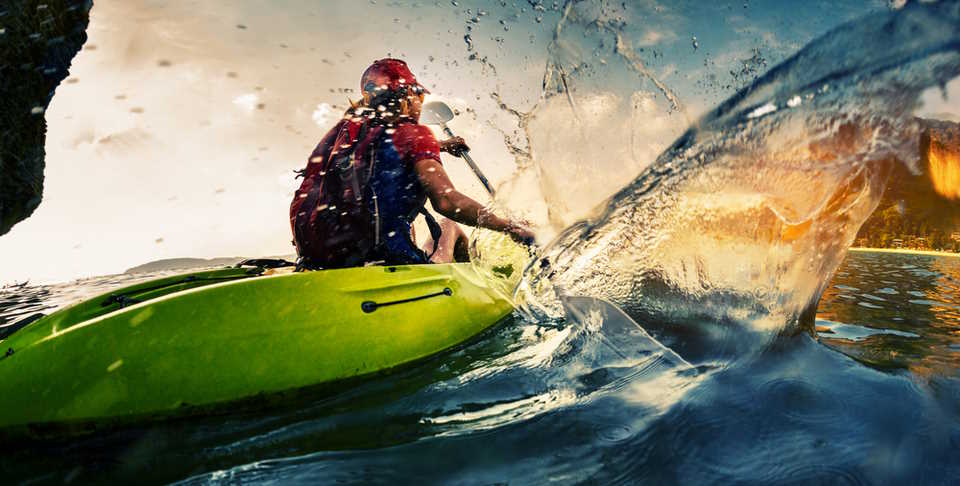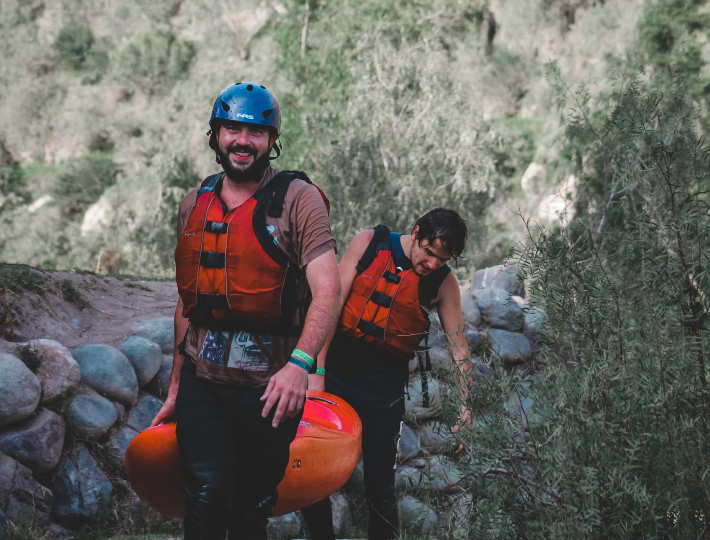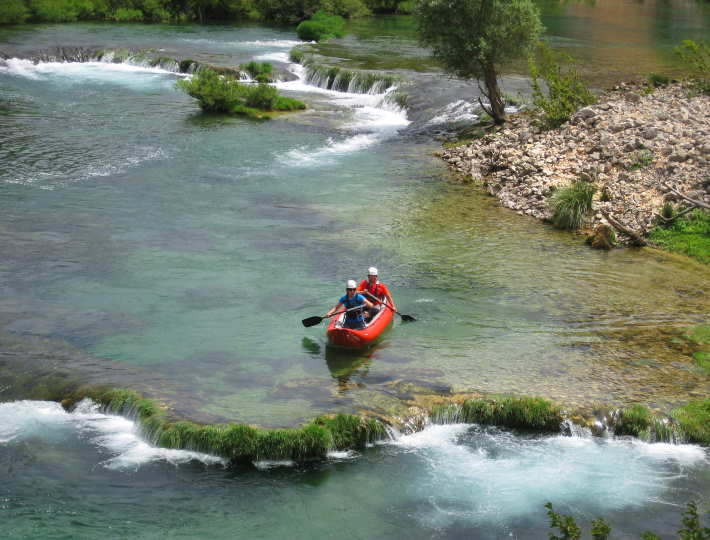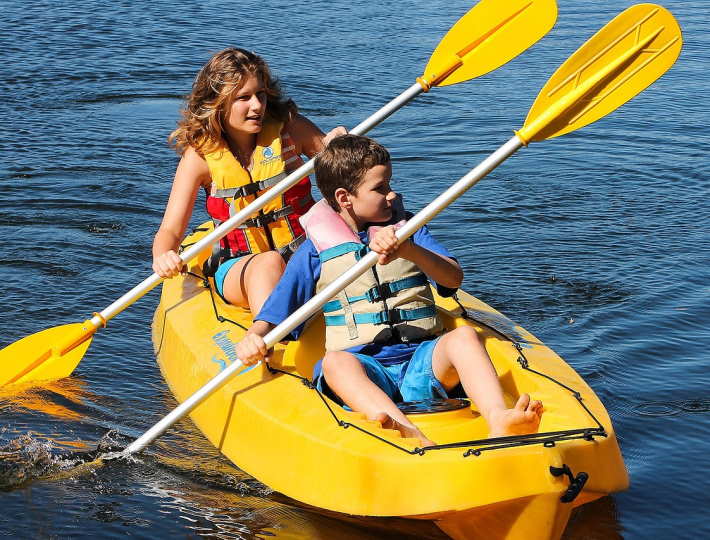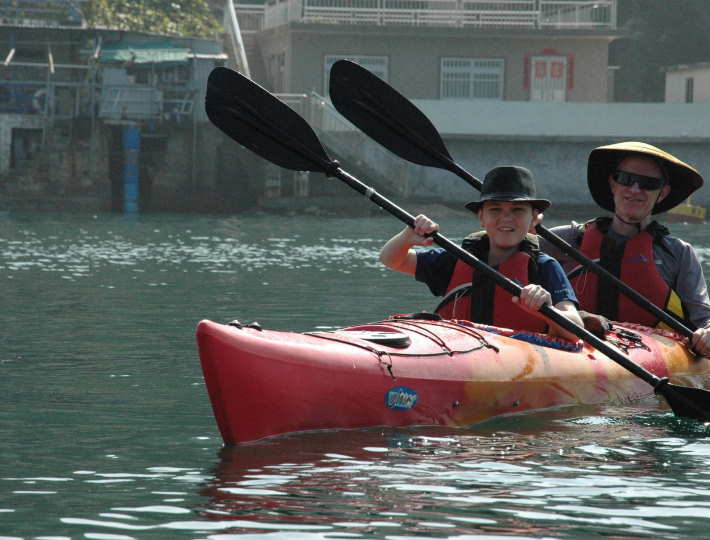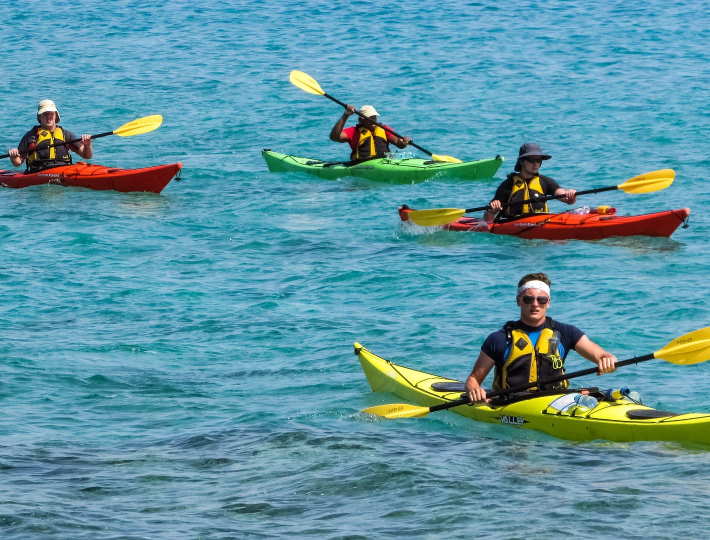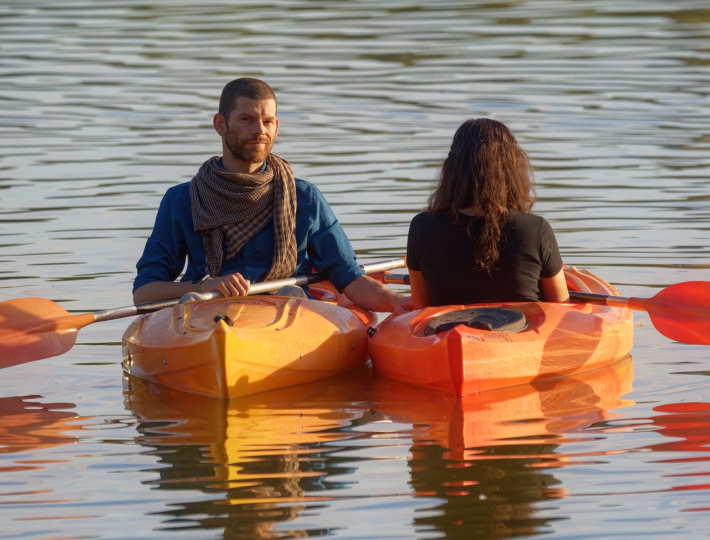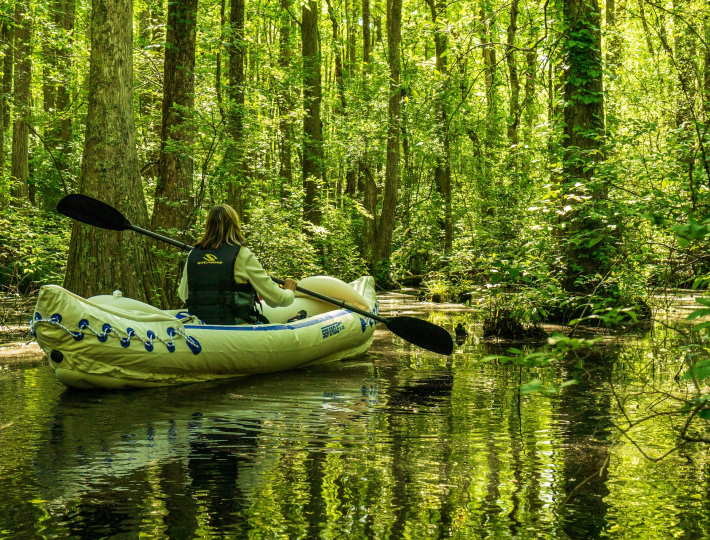Introduction
Kayaking is an activity that has gained a lot of popularity in recent years. It is a fun and exciting water sport that can be enjoyed by people of all ages and abilities. Kayaking involves using a small, narrow boat known as a kayak to navigate through the water.
Kayaking provides a unique opportunity to explore and experience nature in a new way. Unlike other water sports like motor boating, kayaking is a relatively quiet and peaceful activity. It allows you to get up close and personal with wildlife and take in the surroundings at your own pace.
One of the best things about kayaking is that it doesn’t require advanced skills or expensive equipment. Even beginners can easily learn the basics of kayaking and start enjoying this activity in no time. All you need is a kayak, a paddle, and a life jacket to get started.
Dos: Choosing the Right Kayak
Choosing the right kayak is essential to ensure an enjoyable and safe kayaking experience. Kayaks come in various shapes, sizes, and materials, and choosing the one that suits your needs can be a daunting task. Here are some factors to consider when selecting a kayak.
- Intended use: What will you be using the kayak for? Will you be kayaking on calm lakes, choppy rivers, or open seas? Your intended use will determine the type of kayak you need. Sea kayaks are long and narrow for extra speed and stability, while recreational kayaks are shorter and wider for maneuverability.
- Size: Kayaks come in different lengths and widths, and choosing the right size is crucial for your comfort and performance. A longer kayak tracks better and is faster, while a shorter one is easier to maneuver. A wider kayak offers more stability, while a narrower one is more efficient.
- Material: Kayaks come in various materials, including plastic, fiberglass, and carbon fiber. Plastic kayaks are the most affordable and durable, while fiberglass and carbon fiber kayaks are lightweight and faster but also more expensive and delicate.
- Weight capacity: Kayaks have weight limits that must be respected for your safety and the kayak’s performance. Make sure to choose a kayak that can support your weight and any gear or equipment you plan to bring.
Ultimately, the right kayak for you will depend on your personal preferences and needs. It’s essential to try out different kayaks before buying one to ensure a good fit and feel. Many outdoor retailers offer kayak rentals or demo days, which are excellent opportunities to test different kayaks and get advice from experts.
Don’ts: Overestimating Your Abilities
When you’re new to kayaking, it can be tempting to take on challenging waters or embark on long journeys without proper preparation. However, overestimating your abilities can lead to dangerous situations and put you at risk of injury or even death. Here are some tips for avoiding common mistakes and staying safe on the water.
Don’t go alone: If you’re not an experienced kayaker, it’s always best to have a partner or group with you. This will give you an extra set of hands in case of an emergency and provide moral support if you start to feel overwhelmed. Stick together and communicate your intentions to ensure a safe and enjoyable trip.
Don’t ignore weather conditions: Wind, waves, and currents can all impact your ability to paddle and navigate. Be sure to check the weather forecast and monitor conditions throughout your trip. If conditions start to worsen, consider turning back or seeking shelter until things calm down.
Don’t take unnecessary risks: Be realistic about your abilities and limitations. Don’t attempt maneuvers or challenges that are beyond your skill level or physical capabilities. Pushing yourself too far can lead to exhaustion, muscle strain, and dangerous situations that could have easily been avoided.
By following these simple guidelines, you can avoid the dangers of overestimating your abilities and enjoy a safe and rewarding kayaking experience. Remember to always wear a life jacket, bring plenty of water and snacks, and let someone know your plans before heading out on the water. With the right preparation and mindset, kayaking can be a thrilling and enjoyable activity for everyone.
Dos: Learning Basic Skills
Embarking on a kayaking adventure requires a certain level of skill and understanding of the water sport. Whether you’re looking to explore calm lakes or brave wild rapids, learning some basic techniques will provide a solid foundation for your kayaking journey. Here are some essential dos when it comes to learning basic kayaking skills:
-
- Do: Invest in Proper Instruction
While it may be tempting to jump right into the water and start paddling, investing in proper instruction is crucial for your safety and enjoyment. Look for a reputable kayaking instructor who can teach fundamental techniques such as proper paddling form, bracing, and turning. These skills will not only make your kayaking experience more enjoyable, but they will also help you avoid dangerous situations.
-
- Do: Practice in Calm Waters
Once you’ve received proper instruction, it’s time to put your skills to practice. Start by kayaking in calm waters such as a lake or slow-moving river. This will allow you to refine your techniques and build confidence in a safe environment. As you feel more comfortable, you can gradually progress to more challenging waters.
-
- Do: Learn to Roll
Learning to roll your kayak is an essential skill that can help you recover from a capsize quickly. While it may seem daunting at first, with proper instruction and practice, you can master this technique. There are different types of rolls to choose from, so do your research to find which one works best for you.
By following these dos, you can build a strong foundation of basic kayaking skills that will enable you to explore new waters with confidence. Remember, learning is a continuous process, so don’t be afraid to seek additional instruction and practice often.
Don’ts: Ignoring Safety Precautions
When you’re out on the water, it’s important to prioritize your safety above all else. Ignoring safety precautions can lead to accidents or injuries that could have easily been avoided. Here are some tips for staying safe on the water:
Don’t ignore weather conditions. Before you head out on your kayaking trip, make sure to check the weather forecast. If there are high winds, thunderstorms, or other dangerous conditions predicted, it’s best to postpone your trip for a safer day.
Don’t paddle alone. Kayaking with a partner or a group is always safer than going solo. If something goes wrong, having someone there to help can make all the difference.
Don’t neglect proper gear. Life jackets, helmets, and other safety gear may not be the most fashionable accessories, but they are an essential part of kayaking safely. Make sure that you and your fellow kayakers are all equipped with the necessary gear before you set off.
Don’t drink and paddle. It may seem obvious, but drinking alcohol and kayaking is a dangerous combination. Alcohol impairs your judgment, making you more likely to take risks or underestimate hazards on the water. Save the drinks for after you’re back on dry land.
| Do | Don’t |
|---|---|
| Wear your life jacket | Ignore dangerous weather conditions |
| Paddle with a partner or group | Neglect proper safety gear |
| Stay hydrated and fueled | Drink alcohol while kayaking |
| Take a safety course | Take unnecessary risks |
Don’t take unnecessary risks. It’s important to understand your own limitations and not to push yourself too hard. If a rapid looks too intense for your current skill level, don’t attempt it. Trying to kayak above your abilities is a recipe for disaster.
Don’t forget about proper storage and transportation. When you’re not on the water, it’s important to properly store and transport your kayak. Always use a proper roof rack to avoid damage to your kayak or to other vehicles on the road.
By following these safety precautions, you can enjoy your kayaking trip with peace of mind. Keep these tips in mind and stay safe out there!
Dos: Dressing Appropriately
Kayaking is a fun and exciting way to enjoy the water and explore beautiful scenic locations. However, it is essential to dress appropriately to ensure maximum comfort and safety during the kayaking experience.
Comfortable Clothing
It is important to wear comfortable clothing while kayaking. Choose lightweight, moisture-wicking and quick-drying materials, such as nylon or polyester. Avoid cotton, as it can become heavy and stay wet for a long time, causing discomfort and chilly feelings. Long sleeves can protect you from the sun’s rays, cold wind, and insects. Pack a rain jacket and a dry set of clothes in case of unexpected weather changes or capsizing.
Footwear
It is equally essential to wear footwear that provides good grip, protects your feet, and water-resistant. Wet rocks, sharp shells, or debris can easily cause injuries. Water shoes, sandals with straps, or neoprene boots are ideal options. Avoid flip flops or any open toe shoes, as they may slip off your feet and get lost.
Personal Flotation Device (PFD)
Wearing a personal flotation device (PFD), also called a life jacket, is the most critical safety measure in kayaking. Choose the right size and type for your weight and kayaking level. A PFD keeps you afloat, helps you swim, protects your chest in case of impact, and provides visibility to rescuers.
Additional Accessories
You can also bring additional accessories to enhance your kayaking experience. Sunglasses or a hat can protect your eyes and face from glare and the sun’s UV rays. Gloves with a grip can protect your hands and provide better control of the paddle. Sunscreen with a high SPF rating can protect your skin from harmful sunburns.
By dressing appropriately, you can ensure maximum comfort and safety during your kayaking trip. Always remember to wear a PFD and choose clothing and footwear that is suitable for the weather and water conditions.
Don’ts: Overloading Your Kayak
- Don’t exceed the weight limit of your kayak
- Don’t forget to distribute the weight evenly
- Don’t pack too much gear
Overloading your kayak can lead to dangerous situations, such as capsizing. Follow these simple don’ts for packing your kayak and you’ll be well on your way to enjoying a safe and fun kayaking experience. Happy paddling!
Dos: Navigating the Water
If you’re new to kayaking, learning how to navigate the water is essential. Knowing how to read the currents, tides, and wind will help you stay safe and enjoy your kayaking experience to the fullest. Here are some dos to keep in mind when navigating the water:
- Plan ahead: Before you hit the water, make sure you have a plan in place. Know your route and take note of any potential hazards, such as rapids, dams, or shallow areas.
- Learn basic navigation: Knowing how to use a map and compass is important when kayaking in unfamiliar territory. Take the time to learn these basic navigation skills before hitting the water.
- Understand currents: Currents can be tricky to navigate, but understanding how they work is key. Paddle with the current to save energy, and take caution when paddling against the current. Be mindful of changing currents and adjust your course accordingly.
- Pay attention to the tides: Tides can have a big impact on your kayaking experience, especially if you’re paddling in coastal areas. Consult a tide chart before heading out, and plan your trip accordingly. Avoid paddling during high tides or low tides, as these can make it difficult to paddle or even get stuck in shallow waters.
- Be aware of the wind: Wind can make paddling difficult, especially if you’re paddling against it. Check the weather forecast before heading out and plan your route accordingly. If the wind picks up during your trip, try to paddle with the wind rather than against it.
By keeping these tips in mind, you’ll be well on your way to navigating the water like a pro. With practice and experience, you’ll gain a better understanding of currents, tides, and wind, and be able to enjoy kayaking to the fullest.
Don’ts: Damaging the Environment
Kayaking is a great way to explore the beauty and tranquility of the water. However, as with any activity in nature, it’s important to be mindful of our impact on the environment. In this blog post, we will discuss the don’ts of kayaking when it comes to damaging the environment and how to minimize our impact.
Don’t litter: It’s important to remember that even the smallest piece of litter can harm the environment. Make sure to bring a waterproof bag to store your trash and dispose of it properly when you get back to land. Never throw anything into the water, as it can be harmful to the wildlife living there.
Don’t disturb wildlife: While it can be exciting to spot wildlife on your kayaking trip, it’s important to remember that these animals are living in their natural habitat. Avoid disturbing them by keeping a safe distance and never approaching them too closely. Additionally, avoid feeding any wildlife, as it can create a dependency on humans and disrupt their natural behaviors.
Don’t damage vegetation: Be mindful of the plants and vegetation growing alongside the water’s edge. When paddling in shallow waters, avoid disturbing the bottom of the waterway, as it can uproot or damage the vegetation growing there. Additionally, avoid landing on any vegetation when getting out of your kayak and always use designated launch sites when possible.
| Note: | It’s important to research and be aware of any regulations or restrictions regarding kayaking in specific areas. Some areas may have protected wildlife or nesting grounds where kayaking is prohibited, while others may have specific rules regarding launch sites and routes. |
|---|
By following these simple don’ts when kayaking, we can help preserve the natural environment and ensure that it’s around for future generations to enjoy.
Conclusion
Kayaking is a wonderful way to explore waterways, get exercise, and have fun. Whether you’re heading out for an afternoon paddle or planning a multi-day adventure, it’s important to keep these dos and don’ts in mind.
Dos:
- Choose the right kayak for your needs
- Learn basic paddling and safety techniques
- Dress appropriately for the weather and water conditions
- Pack your kayak carefully to avoid overloading
- Read and understand the water currents, tides, and wind patterns
Don’ts:
- Overestimate your abilities
- Ignore safety precautions
- Overload your kayak
- Damage the environment
By following these simple dos and don’ts, you can make your kayaking experience safer and more enjoyable. Always be aware of your surroundings and respect the natural environment. Kayaking is a great way to connect with nature, but it’s important to leave it as you found it.
Remember to always wear your personal flotation device and carry the appropriate safety gear such as a whistle, flares, and a first aid kit. Stay hydrated and do not forget to bring food and water on longer trips. Familiarize yourself with the area you will be kayaking, and let someone know where you are going and when you expect to return.
Finally, remember that kayaking can be a fun and fulfilling activity for people of all ages and abilities. Take your time, learn the basic skills, and enjoy the beauty of our waterways.

